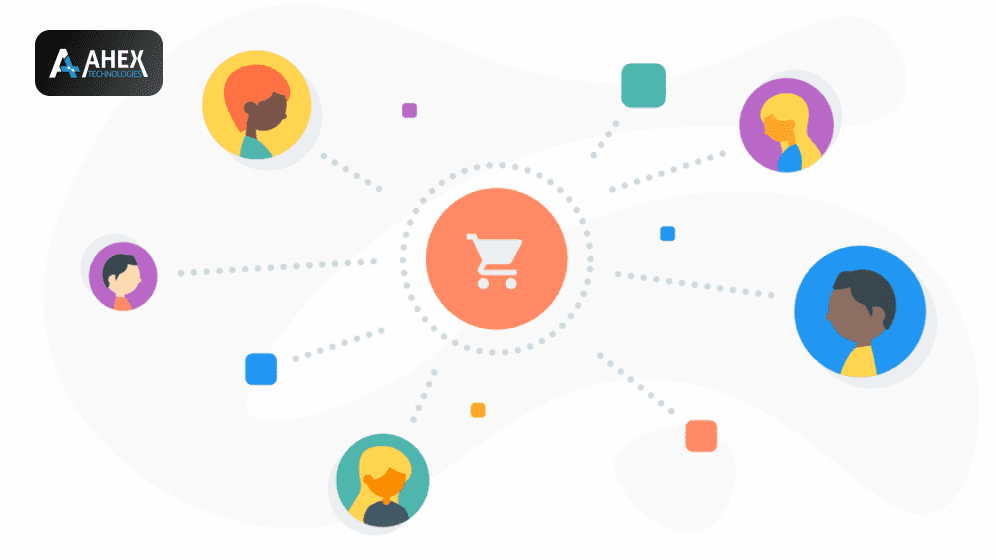
The world of shopping is evolving rapidly, and the rise of eCommerce has revolutionized the way we buy and sell products. As we step into the year 2023, it’s essential for businesses to stay ahead of the curve and embrace the latest eCommerce development trends that are shaping the industry. In this article, we will explore seven key trends that are dominating the eCommerce landscape in 2023.
Trend 1: Personalization
In today’s digital age, customers expect personalized experiences that cater to their unique preferences. Businesses are leveraging customer data and artificial intelligence to deliver highly tailored shopping experiences. By analyzing customer behavior and purchase history, companies can provide personalized product recommendations, targeted marketing campaigns, and customized pricing. Personalization creates a sense of individuality and enhances customer satisfaction, ultimately driving higher conversion rates and customer loyalty.
Trend 2: Mobile Commerce
Mobile devices have become an integral part of our daily lives, and this trend continues to grow in 2023. With the increasing use of smartphones and tablets, businesses must optimize their eCommerce platforms for mobile devices. Mobile-friendly designs, responsive layouts, and intuitive navigation are crucial for providing seamless mobile shopping experiences. Additionally, the rise of mobile payment options such as digital wallets and contactless payments has made mobile commerce even more convenient for consumers.
Trend 3: Voice Commerce
Voice assistants have gained significant popularity, and they are now making their mark in the world of eCommerce. Voice-enabled search and virtual shopping assistants allow customers to make purchases using simple voice commands. This hands-free approach to shopping simplifies the user experience and reduces friction in the buying process. Furthermore, voice-controlled order tracking and personalized recommendations based on voice preferences are enhancing the overall convenience and personalization of the shopping journey.
Trend 4: Augmented Reality (AR) and Virtual Reality (VR)
Augmented Reality (AR) and Virtual Reality (VR) technologies are revolutionizing the way customers interact with products online. By leveraging AR and VR, businesses can provide virtual try-on experiences, allowing customers to visualize how products will look and fit in real life. Additionally, virtual shopping environments enable immersive experiences where customers can explore and interact with products before making a purchase. These technologies bridge the gap between the online and offline shopping experiences, enhancing customer engagement and reducing the likelihood of returns.
Trend 5: Social Commerce
The integration of social media and eCommerce has given rise to social commerce, a trend that continues to shape the online shopping landscape in 2023. Social media platforms have become powerful marketplaces where businesses can showcase their products and connect with customers directly. Shoppable posts, influencer marketing, and user-generated content have become essential strategies for driving sales and building brand loyalty. Social proof plays a significant role in purchasing decisions, and businesses must leverage social media to engage with their audience and create authentic connections.
Trend 6: Same-Day Delivery and Hyperlocal Shopping
In today’s fast-paced world, customers crave instant gratification, and speedy delivery options have become a key differentiator in eCommerce. Same-day delivery services are gaining popularity, and businesses are investing in localized fulfillment centers and partnerships with local businesses to provide quick and efficient delivery options. Additionally, curbside pickup services have become increasingly popular, allowing customers to order online and collect their purchases conveniently. The demand for hyperlocal shopping experiences is reshaping the eCommerce landscape and pushing businesses to optimize their logistics operations.
Trend 7: Sustainability and Ethical Shopping
As consumers become more conscious of environmental and social issues, sustainability and ethical shopping have become significant considerations in their purchasing decisions. Businesses are adopting eco-friendly practices such as using recyclable packaging, implementing sustainable sourcing, and reducing their carbon footprint. Transparent supply chains and ethical business practices are also
becoming increasingly important to consumers. By promoting sustainability and ethical values, businesses can attract eco-conscious customers and build a positive brand image. Incorporating sustainable practices into their operations is not only socially responsible but also a strategic advantage in the competitive eCommerce landscape.
In conclusion, the future of shopping is being shaped by these seven dominant eCommerce trends in 2023. Personalization, mobile commerce, voice commerce, AR and VR experiences, social commerce, same-day delivery, and sustainability are all driving forces in the industry. Businesses that adapt and embrace these trends will gain a competitive edge, attract more customers, and foster long-term loyalty.
FAQs
To implement personalization in eCommerce, businesses can start by leveraging customer data and employing artificial intelligence algorithms. They can analyze customer behavior, purchase history, and preferences to deliver personalized product recommendations and tailored marketing campaigns. Implementing a robust customer relationship management (CRM) system and utilizing customer segmentation strategies can also enhance personalization efforts.
Mobile commerce offers several benefits to consumers. It provides convenience, allowing users to shop anytime and anywhere using their smartphones or tablets. Mobile-friendly designs and responsive layouts ensure a seamless shopping experience on smaller screens. Moreover, mobile commerce offers quick and secure payment options, including digital wallets and contactless payments, making transactions faster and more convenient.
Voice commerce simplifies the shopping experience by enabling customers to make purchases through voice commands. It reduces the need for manual input and streamlines the buying process. Voice-enabled search and virtual shopping assistants provide hands-free navigation and personalized recommendations based on voice preferences. Voice commerce enhances convenience, especially in situations where customers have limited physical access, such as driving or multitasking.







